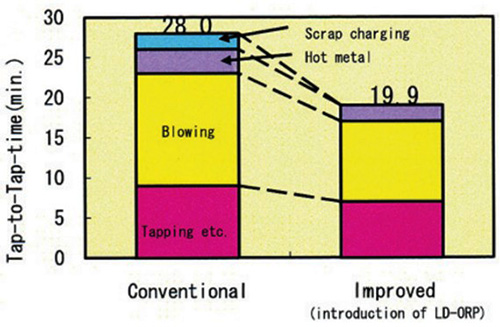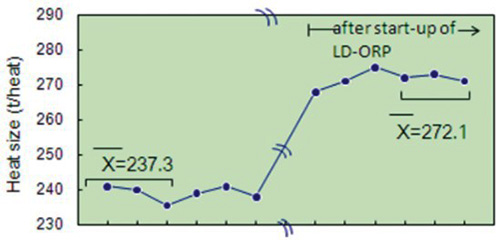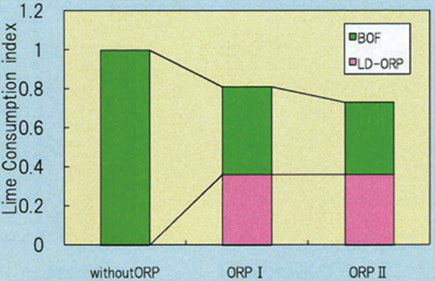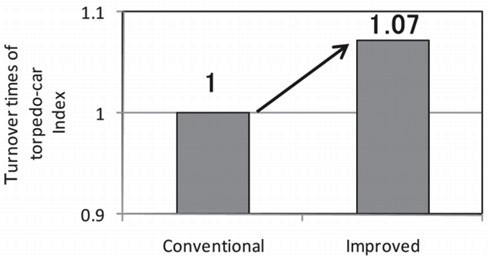LD-ORP Optimizing Refining Process: Part Two
Abstract
The LD-ORP significantly shortens the tap to tap time and allows for increased heat size meaning and overall positive gain in converter productivity.
Another significant gain through implementation of LD-ORP in specific cases has been the reduction in the process consumption of CaO.
The developed method, named the LD-Optimized Refining Process (LD-ORP), comprises charging hot metal into the converter assigned for de-Si and de-P, and then, after these processes, desulfurizing it in the same vessel by blowing CaO and other desulfurizing agents from the bottom, discharging the slag, and transferring the hot metal to another converter assigned for de-C.
Through the development, introduction, and modification of the LD-ORP process, it has become possible to shorten the tap-to-tap time and increase the heat size and thereby enhance the converter productivity as shown in Figures 1 and 2. In addition, the unit consumption of CaO has been reduced as shown in Figure 3. Furthermore, because the introduction of ORP II and the installation of a furnace exclusive for desulfurization made it possible to completely omit the desulfurization treatment using torpedo cars, the turnover rate of torpedo cars has improved as shown in Figure 4.

Figure 1: Changes of tap-to-tap time at the converter by introduction of LD-ORP

Figure 2: Increase in heat size of the converter by introduction of LD-ORP

Figure 3: Reduction of lime consumption by introduction of LD-ORP

Figure 4: Changes of turnovertimes of torpedo-car
Find Instantly Thousands of Heat Treatment Diagrams!
Total Materia Horizon contains heat treatment details for hundreds of thousands of materials, hardenability diagrams, hardness tempering, TTT and CCT diagrams, and much more.

Get a FREE test account at Total Materia Horizon and join a community of over 500,000 users from more than 120 countries.